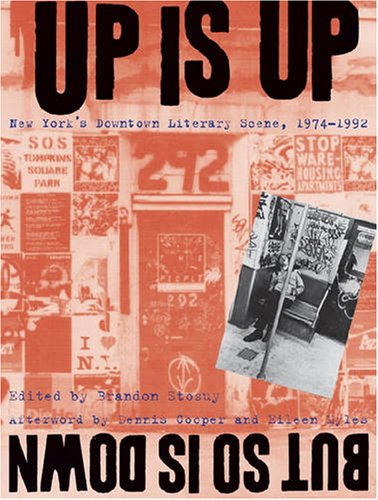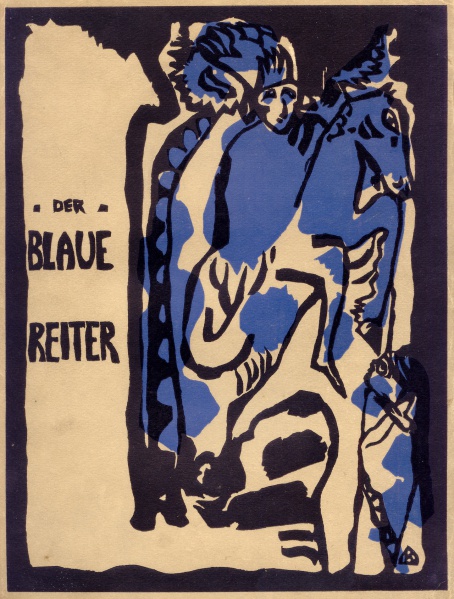Brandon Stosuy (ed.): Up Is Up, But So Is Down: New York’s Downtown Literary Scene, 1974-1992 (2006)
Filed under book | Tags: · 1970s, 1980s, 1990s, art, diy, history of literature, literature, music, new york, poetry, publishing, theatre

“Sometime after Andy Warhol’s heyday but before Soho became a tourist trap, a group of poets, punk rockers, guerilla journalists, graffiti artists, writers, and activists transformed lower Manhattan into an artistic scene so diverse it became known simply as “Downtown.“ Willfully unpolished and subversively intelligent, figures such as Spalding Gray, Kathy Acker, Richard Hell, David Wojnarowicz, Lynne Tillman, Miguel Piñero, and Eric Bogosian broke free from mainstream publishing to produce a flood of fiction, poetry, experimental theater, art, and music that breathed the life of the street.
The first book to capture the spontaneity of the Downtown literary scene, Up Is Up, But So Is Down collects more than 125 images and over 80 texts that encompass the most vital work produced between 1974 and 1992. Reflecting the unconventional genres that marked this period, the book includes flyers, zines, newsprint weeklies, book covers, and photographs of people and the city, many of them here made available to readers outside the scene for the first time. The book’s striking and quirky design—complete with 2-color interior—brings each of these unique documents and images to life.
Brandon Stosuy arranges this hugely varied material chronologically to illustrate the dynamic views at play. He takes us from poetry readings in Alphabet City to happenings at Darinka, a Lower East Side apartment and performance space, to the St. Mark’s Bookshop, unofficial crossroads of the counterculture, where home-printed copies of the latest zines were sold in Ziploc bags. Often attacking the bourgeois irony epitomized by the New Yorker’s short fiction, Downtown writers played ebulliently with form and content, sex and language, producing work that depicted the underbelly of real life.
With an afterword by Downtown icons Dennis Cooper and Eileen Myles, Up Is Up, But So Is Down gathers almost twenty years of New York City’s smartest and most explosive—as well as hard to find—writing, providing an indispensable archive of one of the most exciting artistic scenes in U.S. history.”
With an afterword by Dennis Cooper and Eileen Myles
Publisher NYU Press, 2006
ISBN 9780814740118
500 pages
Downtown Collection at NYU’s Fales Library
Reviews: Ed Halter (Village Voice, 2006), Meghan O’Rourke (New York Times, 2006), Tim W. Brown (Columbia Journal of American Studies, n.d).
Commentary: Cynthia Carr (New York Times, 2006), Peter Cherches (2006).
PDF (39 MB, updated on 2019-8-23)
Comments (2)Kandinsky, Franz Marc (eds.): Der Blaue Reiter (1912–) [DE, RU, EN]
Filed under book | Tags: · art, art theory, avant-garde, cubism, expressionism, music, music theory

Der Blaue Reiter [The Blue Rider] was initiated in 1911 by the young painters Wassily Kandinsky and Franz Marc and was active until 1914. Conceived in June 1911 and published in Munich in May 1912, Der Blaue Reiter (Almanach) [The Blue Rider Almanac] presented their synthesis of international culture to the European avant-garde at large.
The Almanac was published in an edition of 1100 copies. Its costs were underwritten by the industrialist and art collector Bernhard Koehler, a relative of August Macke. It contained reproductions of more than 140 artworks, and 14 major articles. A second volume was planned, but the start of World War I prevented it. Instead, a second edition of the original was printed in 1914.
The contents of the Almanac included:
* Marc’s essay “Spiritual Treasures,” illustrated with children’s drawings, German woodcuts, Chinese paintings, and Pablo Picasso’s Woman with Mandolin at the Piano
* an article by French critic Roger Allard on Cubism
* Arnold Schönberg’s article “The Relationship to the Text”, and a facsimile of his song “Herzgewächse”
* facsimiles of song settings by Alban Berg and Anton Webern
* Thomas de Hartmann’s essay “Anarchy in Music”
* an article about Alexander Scriabin’s Prometheus: The Poem of Fire
* an article by Erwin von Busse on Robert Delaunay, illustrated with a print of his The Window on the City
* Macke’s essay “Masks”
* Nikolai Kulbin’s essay “Free Music”
* Kandinsky’s essay “On the Question of Form”
* Kandinsky’s “On Stage Composition”
* Kandinsky’s The Yellow Sound.
The art reproduced in the Almanac marked a dramatic turn away from a Eurocentric and conventional orientation. The selection was dominated by primitive, folk, and children’s art, with pieces from the South Pacific and Africa, Japanese drawings, medieval German woodcuts and sculpture, Egyptian puppets, Russian folk art, and Bavarian religious art painted on glass. The five works by Van Gogh, Cézanne, and Gauguin were outnumbered by seven from Henri Rousseau and thirteen from child artists. (from Wikipedia)
Second Edition
With two Forewords by Kandinsky and Franz Marc
Publisher Piper, Munich, 1914
140 pages
via Archive.org
Wikipedia (German)
Der Blaue Reiter (German, 1914, PDF converted from Archive.org’s JP2 scans, w/o blank pages, 43 MB, no OCR, multiple formats)
Siniy vsadnik (Russian, trans. Z.S. Pyshnovskaya, 1996, added on 2018-7-15)
English translation of the Forewords
Listen to Arnold Schönberg’s Herzgewächse (Audio)
Comment (0)Craig Dworkin: No Medium (2013)
Filed under book | Tags: · architecture, art, art theory, attention, body, book, conceptual art, dada, film, fluxus, literature, media, music, painting, paper, phonograph, sculpture, sex, silence, temporality, time, translation, typography
“In No Medium, Craig Dworkin looks at works that are blank, erased, clear, or silent, writing critically and substantively about works for which there would seem to be not only nothing to see but nothing to say. Examined closely, these ostensibly contentless works of art, literature, and music point to a new understanding of media and the limits of the artistic object.
Dworkin considers works predicated on blank sheets of paper, from a fictional collection of poems in Jean Cocteau’s Orphée to the actual publication of a ream of typing paper as a book of poetry; he compares Robert Rauschenberg’s Erased De Kooning Drawing to the artist Nick Thurston’s erased copy of Maurice Blanchot’s The Space of Literature (in which only Thurston’s marginalia were visible); and he scrutinizes the sexual politics of photographic representation and the implications of obscured or obliterated subjects of photographs. Reexamining the famous case of John Cage’s 4’33”, Dworkin links Cage’s composition to Rauschenberg’s White Paintings, Ken Friedman’s Zen for Record (and Nam June Paik’s Zen for Film), and other works, offering also a “guide to further listening” that surveys more than 100 scores and recordings of “silent” music.
Dworkin argues that we should understand media not as blank, base things but as social events, and that there is no medium, understood in isolation, but only and always a plurality of media: interpretive activities taking place in socially inscribed space.”
Publisher MIT Press, 2013
ISBN 0262018705, 9780262018708
219 pages
Interview with the author (Critical Margins)
Author’s lecture at Penn Poetry & Poetics (video, 19 min)
Reviews: Johanna Drucker (Los Angeles Review of Books), Michael Leong (Hyperallergic).
Commentary: Richard Marshall (3:AM Magazine).


